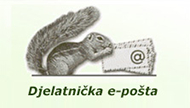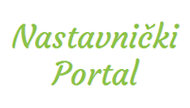RURAL AND KARST AREAS
The main anticipated result of the scientific project Croatian Rural Areas: Scenario-based Approach to Discuss Planning and Development (CRORURIS) financed by the Croatian Science Foundation is the production of a set of alternative future scenarios for Croatian rural areas in 2030 with the goal of encouraging informed and evidence-based public debate on rural futures. Although several scenarios have been developed for rural areas both in European Union and member countries, to our knowledge no scenario-based research has been done in Croatia so far.
In the scientific project Geographic Evaluation of Spatial Resources in Rural and Karst Areas of Croatia financed by the Ministry of Science, Education and Sports the earlier mono-sector approach to ruris, in which agriculture made the basic development instrument, has been replaced by integral evaluation of all spatial resources in the framework of the sustainable development concept. In that connection, the study focus was moved to a complex geographic area out of larger cities, with the aim of coordinated evaluation and protection of its environment. This research is a contribution to the improvement and revitalization of the parts in Croatia affected by rural retrogression. According to it, rural and karst areas are supposed to be evaluated and their environment protected. Such a development direction makes an imperative of the development in Croatia and a component of its structural adaptation in the process of approaching the EU.
POPULATION
Former researches in the field of population geography in Croatia have found that modern demographic development of Croatia is characterized by unfavourable processes and structural features: general depopulation, depopulation of the majority of administrative-territorial units, (bio) reproduction depopulation, rural-urban division, accelerated ageing and a very high degree of old age. In an interdependent activity the quoted elements of demographic development (and some other, such as out-migration and wars) have formed a very uneven presence of population in Croatia and unbalanced regional development, deepened the differences between the rural and urban areas, as well as between the outskirts and centres. Therefore, the principal research aim of the project Spatial Features of Demographic Resources in Croatia is identification, evaluation and projection of demographic resources in Croatia and its spatial units. The research focus is in the spatial dimension of demographic resources problems. As Croatia is in front of the integration with the European region, an overall valorisation of its regions is necessary, as well as that of its demographic resources and potentials.
BORDER REGIONS
Project Geographical Research of Border Regions of Croatia includes the research of the following four topic contents – the basic natural features of border regions, historical-geographic development, contemporary politico-geographic characteristics and socio-economic features as a consequence of the former development. The project also includes the researches of still “disputable” or politically sensitive border regions, but also related politico-geographic or geopolitical contents interesting for our country.




